It’s a muggy, overcast afternoon as we board our speedboats for Tioman Island. Usually, a ferry is available to reach Tioman Island. Yet, a more adventurous mode of transport is fitting in order to reach Malaysia’s rugged island wilderness. Rain-jackets are a must, especially when the boat roars across the waves, coasting along boisterous barrels of this part of the South China Sea.

With every bump and every spray of seawater across my windswept face, I start to wonder how a turtle calls this part of the world home. Each wave thrusts the boat forward then ripping it back, all as part of the rhythm of this off-kilter body of water. While this is native turtle habitat, humans like me start to try and understand what turtles all over the planet are dealing with right now.
On the contrary, what humans don’t understand is what is lurking underneath the charcoal-blue waves. Snares in the form of discarded fishing nets, rubbish in the form of plastic bottles or bags, and pollutants that are cascading into the water from the mainland or marine transport. Tioman Island is the destination where I can learn more.
Once our boat eases alongside the jetty at Tioman Island, I scramble to the shore. I walk the ‘wobble’ out of my legs to the tune of the clap of my flip-flops. Tioman Island’s terrain is tranquil yet brooding. Masses of mountainous rainforest fall toward the sea, reluctantly meeting the small fishing boats bobbing in the shallows. What punctuates the sandy shore is a clump of seaweed here or a shiny shell there, only a brisk walk to our low-level lodgings.
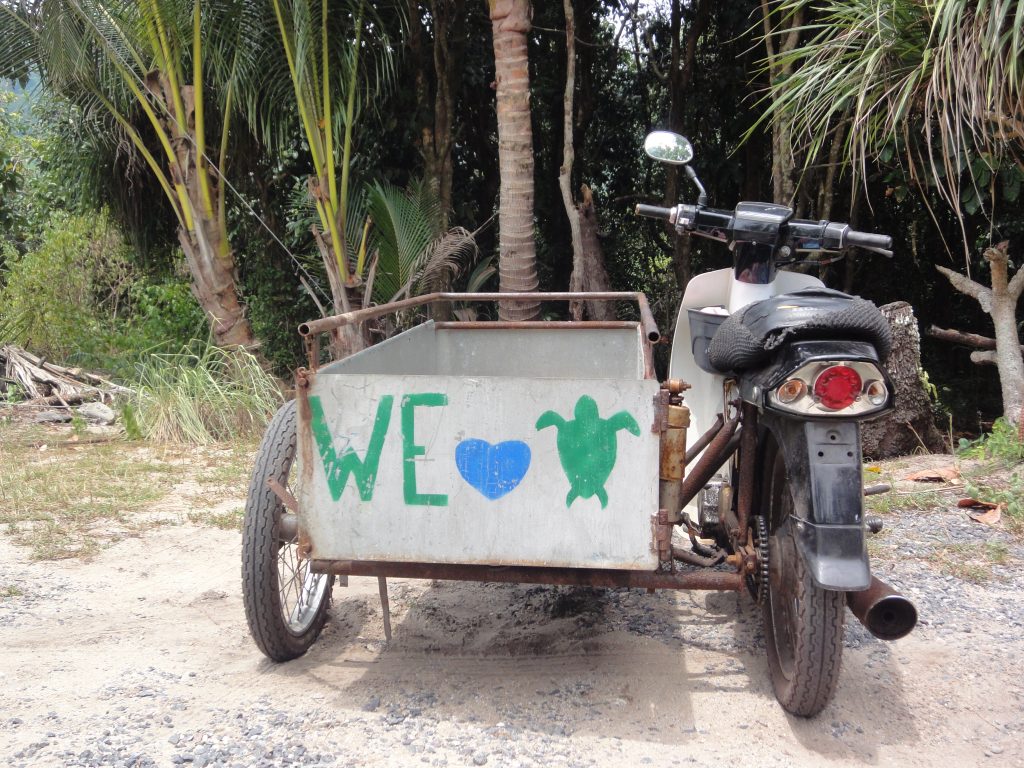

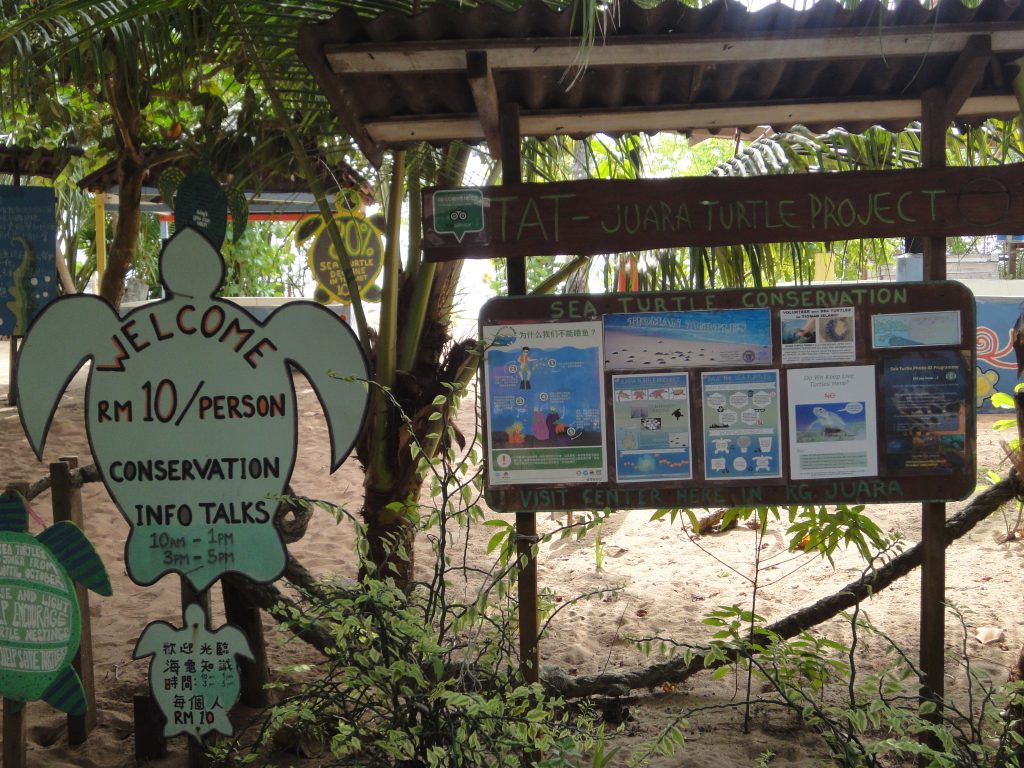
Travelling through Tioman Island is a way to understand the plight of turtles who call our oceans home. Tioman Island is a micro-habitat – a testing ground of sorts – where dedicated scientists try to understand how we can save turtle populations.
Volunteers who run Juara Turtle Project are mostly marine biology graduates. The project’s mission is to “develop highly considerate practices regarding sea turtles and environment in and around Kg Juara and Tioman Island, while also creating a research database of the natural life on and around Tioman Island for use as reference and as support for protection of Tioman’s ecosystems.”
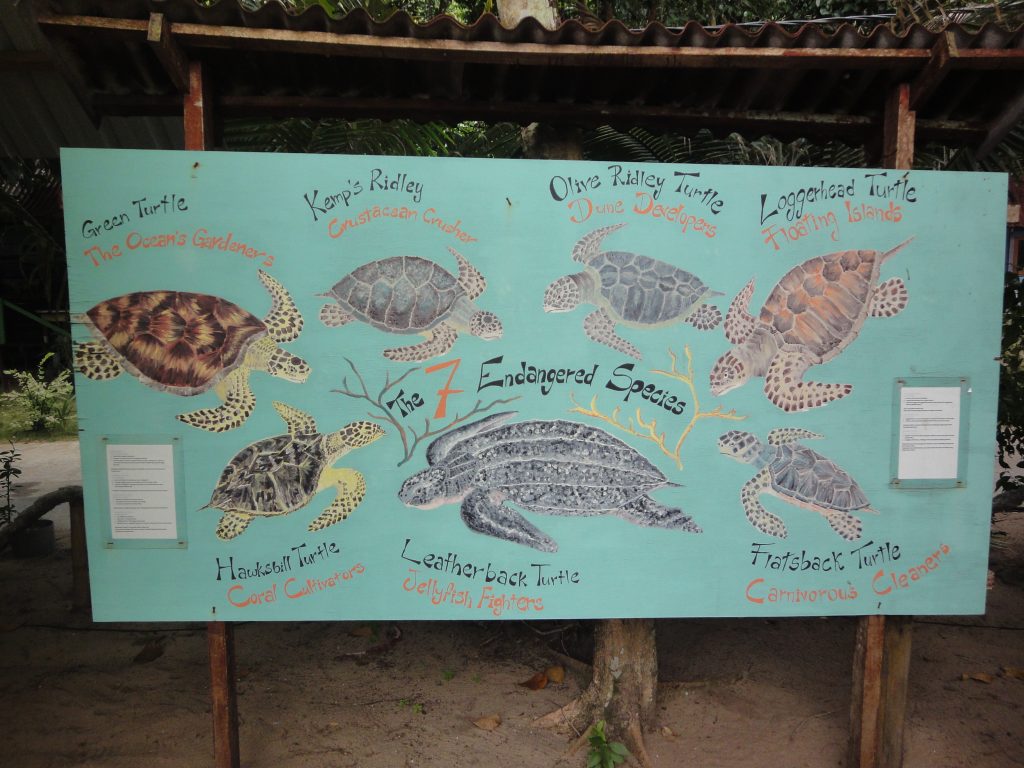
The three major threats that are affecting turtle populations are:
- Large-net fishing
- Legal harvesting of turtle eggs in Malaysia
- Effects of the development of Tioman Island and surrounding locations
Sadly, there has been an 80% reduction in turtles at Tioman Island in the last ten years. So, how is the Juara Turtle Project trying to succeed in its mission?
Building Awareness and Lobbying for Change
The Juara Turtle Project visitor centre starts with the project’s ability to create and spread awareness about the plight of turtles here and abroad. During my visit to Juara Turtle Project, I hear about the sad life of a blind turtle. Because of his condition, he was kept at the premises in his own tank. Otherwise, he would not have survived in its natural habitat. The irony of his story is that one day he disappeared without a trace. Theories ran wild – was he returned to the ocean? Was he stolen for monetary gain?

Another sad story is told about another turtle found surfacing in shallow waters nearby and unable to dive. Despite every effort to save her, she passed away soon after her rescue. An autopsy was performed, which revealed the sad reality of turtles around the world. The state of this turtle’s internal systems was heart-breaking. Blackened areas with no signs of fat suggested that her body was feeding off her own skin and body fat, eventually starving herself to death because of her inability to dive for food. Barnacles on her shell suggested she had been surfacing for a long time. Intestines were found to be clogged with plastic because she was feasting on plastic, confusing it for jellyfish (a turtle’s natural food source). She was bloated due the air pockets forming in her gut.
Another dire reality for turtles was hard to hear, too. For many newly-hatched turtles, their internal compasses are being affected by human impact. The increase of lights around the island are disorientating turtle hatchlings, thus leading them away from the shore rather than to the shore. They then scurry inland rather than to the sea.
Protecting Turtle Nests around Tioman Island
Because of the major threats listed above, Juara Turtle Project volunteers need to collect turtle nests from nesting spots around the island. Nests are then brought to the Project’s premises to be incubated in in hatches. Until change in perception and law occurs, this is the best way to ensure successful survival rates for these hatchlings.
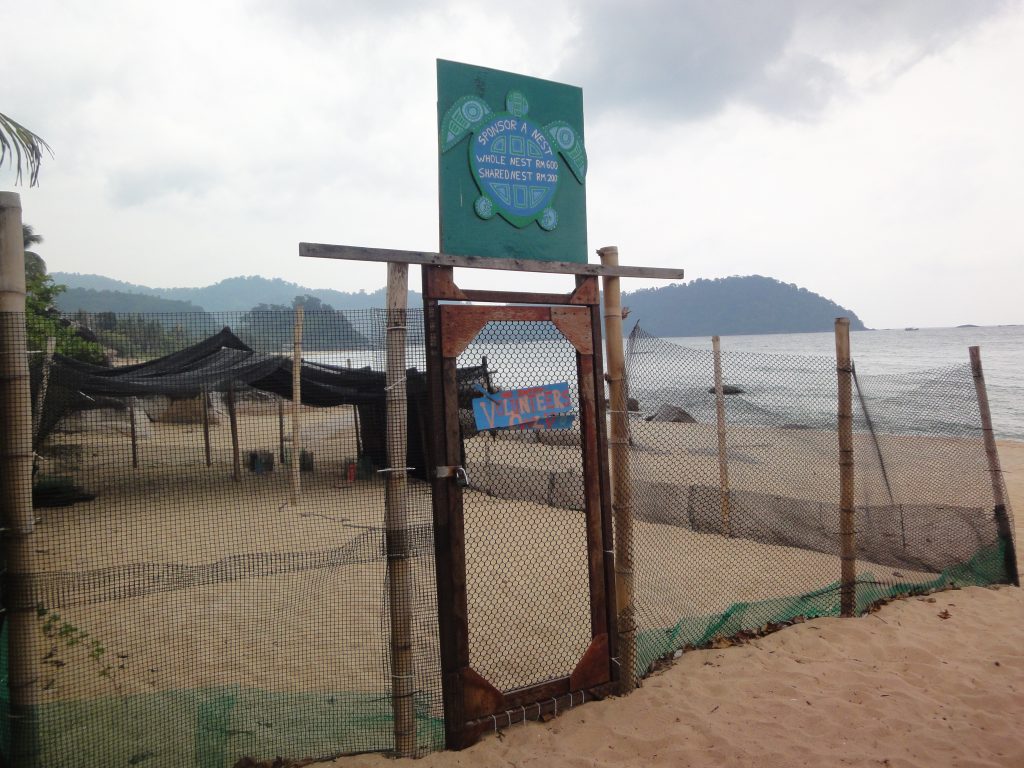
Data Collection and Research
The work carried out by the Juara Turtle Project includes data collection and research into turtle populations. The work being completed here also extends to terrestrial and coral reef research (Tioman Island is surrounded by reefs). All data collected is helping research illustrate the importance of – and necessity for – turtle conservation in this part of the world. The research is then a useful blueprint for turtle conservation for more marine ecosystems around the world.
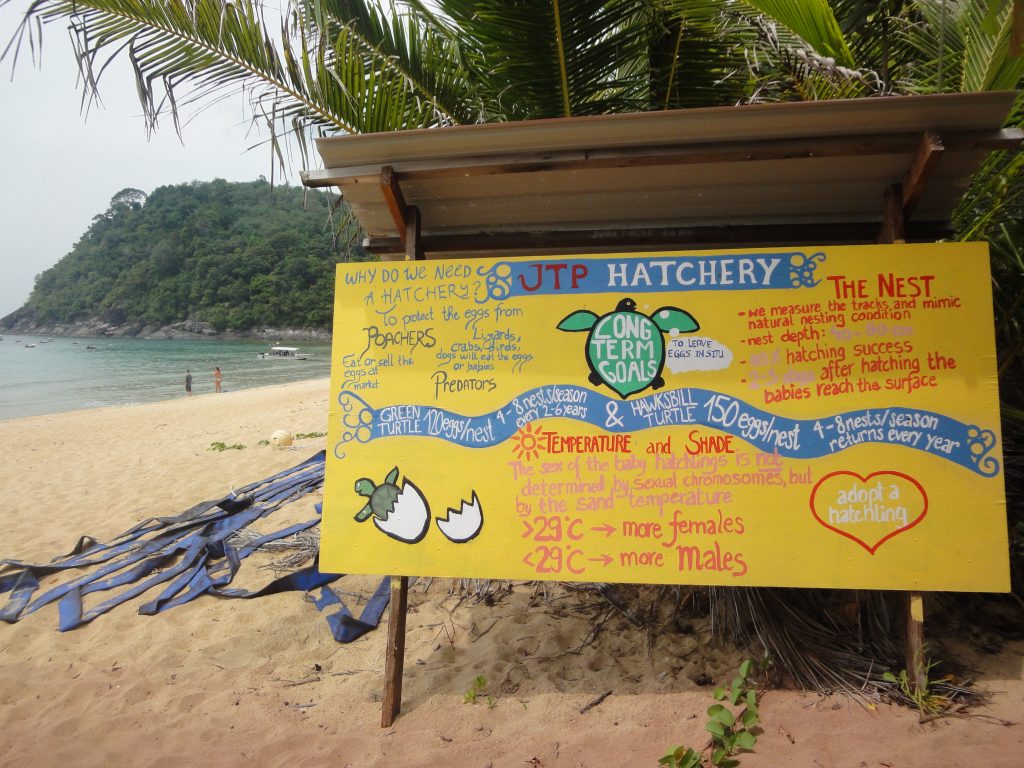
The human impact on Tioman Island and surrounding seas is perpetuating the decline of turtles in the area, just like other locations around the world. While the devastating effects of human activity is a huge problem, we can all make small steps in our lives to help contribute to a bigger impact for change. Whether it’s saying no to eating seafood, eliminating or reducing the use of plastic, embarking on sustainable travel or keeping our oceans clean by organising beach clean-ups, we can all make a difference on a collective scale. The time for change and action is now, in order to save the world’s turtle populations.
VegVoyages’ Malaysian Rainforests, Reefs, Cultures and Cuisines tour travels to Tioman Island and visits Juara Turtle Project. You can help the Juara Turtle Project through volunteering and donations. Visit their website to learn more.
All trips, accommodation, tours, meals and travel expenses were paid in full by Justine de Jonge.



